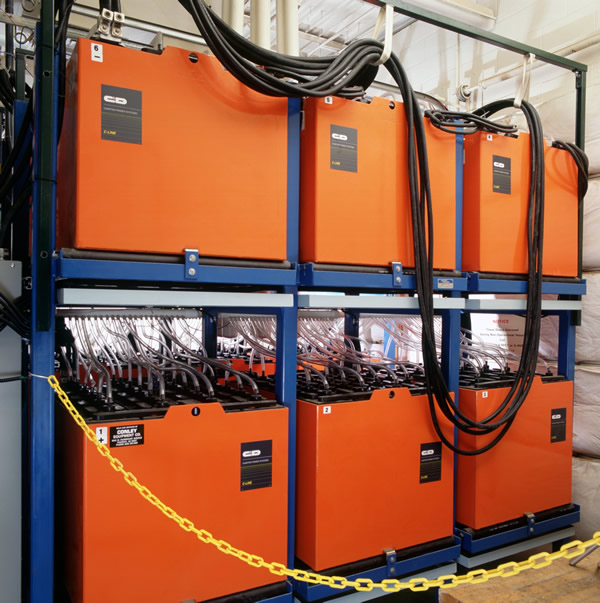
Photo: NREL
Is it just our imagination or is the energy world, which seems to have been relatively predictable until we passed the millennium mark, now changing at breakneck speed? New ideas and new technologies seem to be bursting out in all directions, challenging old assumptions and upending business models. In the urgent search for solutions to our climate crisis, there is also optimism and the hope of a new energy paradigm. This paradigm, we fervently believe, will be one that is renewable and distributed, resilient, egalitarian or somewhat democratic at minimum, and of course, profitable! At least that’s what we’re working towards. And, although there are battles as the old paradigm gives way to the new, it seems like the natural evolution of new, renewable and distributed energy technologies is finally taking us in the right direction.
At the risk of oversimplifying things, we wanted to share our observations on some of the most interesting trends that affect microgrids, developments that are likely to be popping up in your news feeds this year.
Affordable Energy Storage
The plummeting price of storage is probably the most striking trend in the energy industry. Even if nothing else were happening, this development alone would be shifting the energy landscape significantly. Batteries – in terms of performance and affordability – are now heading for the winner’s circle. The cost will drop even further, but we can safely say that energy storage is finally starting to revolutionize the ways in which renewable energy is being used:
- Storage is poised to empower energy consumers, giving them greater resiliency and more control over their electricity bills.
- Our fear of duck curves and wind-driven power surges that have no place to go is giving way to practical planning questions: How can diverse distributed generation resources be managed, controlled, integrated into our grids, used to cut costs and produce profitable energy? Storage is beginning to prove that it can tame the wild excesses of renewable power – once so readily dismissed by energy planners because of the “intermittency problem.”
- Utilities (in CA and NY) have been substituting distributed storage for expensive grid upgrades or extension of transmission lines to remote locations. In order to follow suit, other states would have to implement similar types of policy changes and incentives.
 Wind and Solar Costs Continue to Decline, Beating Predictions
Wind and Solar Costs Continue to Decline, Beating Predictions
There’s no stopping it. Despite a history of models that have underestimated PV growth and capacity, solar continues to outperform all expectations. And while “soft costs” remain stubbornly high in the US, price declines for solar and wind equipment are benefitting every part of the world.
Price drops are predicted to continue at least through 2040, with significant impacts to the coal industry, according to a 2017 study in Bloomberg New Energy Finance. The declining costs of renewable resources will continue to drive the adoption of microgrids and provide incentives for better grid integration of distributed energy resources (DERs).
HOMER Controller API
In response to the growing importance of microgrid control strategies and tools, HOMER Energy has developed a new product, HOMER Controller API. This allows our customers to model microgrids using their own – or other commercially available controller software – within the HOMER Pro platform. Learn more.
Controls and Controllers: Better Integration with the Grid
As the growth of distributed energy continues to challenge the central power plant paradigm, that raises concerns about the integration of DERs, grid stability and performance. But software, electronics, and microelectronics developers are stepping up to the challenge with a myriad of new products that can help in this process. And they’re doing it faster than anyone expected. Smart meters, smart inverters, smart gensets (with built-in microgrid controllers), Distributed Energy Resource Management Systems (DERMS), Battery Management Systems (BMS) and other tools, either structured as cloud layers or peer-to-peer networks – are all making grids smarter, while also making it possible to add more solar and wind resources to the mix without destabilizing the grid.
Given the slow pace and complexity of introducing changes to legacy utility systems, many of these innovations are being tested – and proven – in microgrids.
That puts many microgrid projects at the cutting edge of DER integration. Here’s what these new tools do to keep energy flowing safely and reliably to meet loads:
- Monitor grid reliability remotely
- Regulate voltage and reactive power flows
- Control / regulate storage systems, renewable DERs, operating reserves, and backup generation in real time
- Defer / curtail energy sent to specific loads
- Manage demand response; signal smart meters to reduce or shut off power
- Aggregate / coordinate multiple storage devices into virtual power plants or virtual microgrids
- Manage billing and other customer services remotely
Look for continued innovation in digital controls for energy, along with increased competition in the marketplace.
Read 2018 Trends That Will Affect Microgrid Development: Part Two
